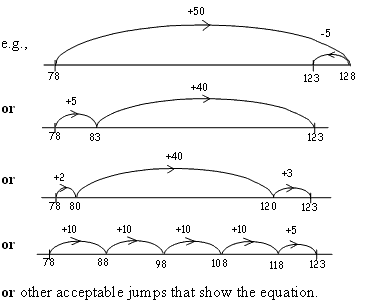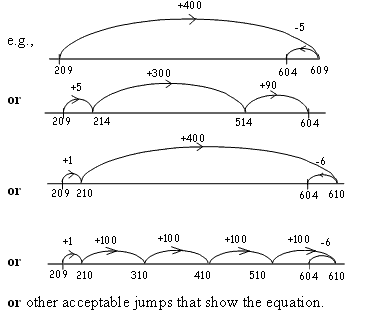Number line addition and subtraction III
This task is about showing how to solve addition & subtraction problems using a number line.
For the questions below show how to solve the equations on the number line.
| a) |
Use the number line below to show how to solve the equation: 78 +  = 123 = 123 |
 |
|
| b) |
Use the number line below to show how to solve the equation: 209 +  = 604 = 604 |
 |
|
| c) |
Use the number line below to show how to solve the equation: 230 -  = 125 = 125 |
 |
|
| d) |
Use the number line below to show how to solve the equation: 375 -  = 198 = 198 |
 |





